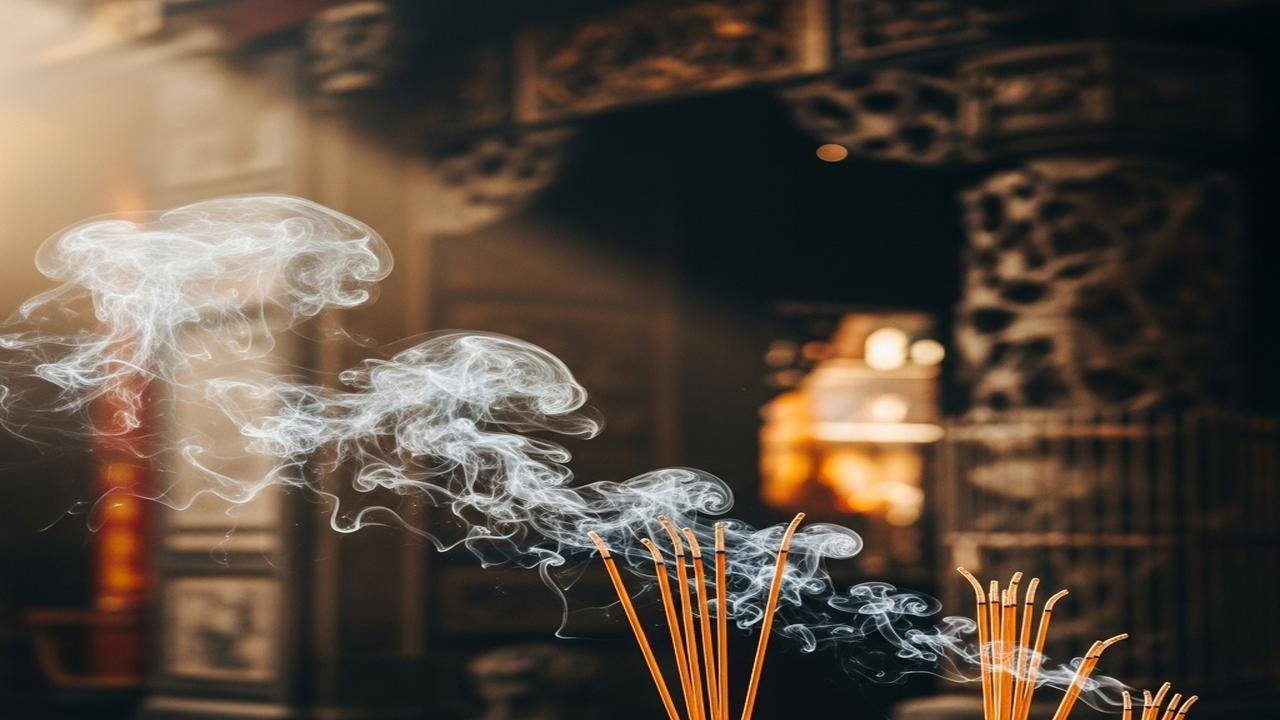Incense Sticks, Secrets of Temple Smoke and Devotion

The gentle curl of smoke, a prayer on the breeze — many of us have stood in a temple or at a small home altar watching incense rise and wondered why this simple act feels so sacred. The story of incense sticks in rituals is both devotional and scientific, rooted in history yet alive in our daily lives.
Long before modern laboratories, our ancestors discovered that burning fragrant woods, resins, and herbs brought calm and clarity. In Indian temples, the aroma of sandalwood, camphor, and other ingredients became a bridge between the earthly and the divine. The scent was not only pleasing; it carried meaning. It symbolized purification, the transformation of the material into the subtle, and the offering of our senses to the Divine.
There is a quiet science behind that curl of smoke. When an incense stick burns, heat causes the resin and essential oils in its paste to vaporize. These volatile compounds travel on the smoke and interact with our olfactory system. Aromas like sandal, agarwood, and jasmine contain molecules that soothe the nervous system, lower heart rate, and create a sense of calm. This is why a few breaths of temple air can make the mind feel still and receptive.
But the science is also practical. Burning incense can gently mask unwanted smells, reduce airborne bacteria, and create a focused environment for meditation or prayer. Traditional ingredients were chosen with intention: frankincense and myrrh for their antiseptic properties, camphor for clarity, and certain herbs for their calming effects. These choices were early forms of aromatherapy—simple, effective, and deeply woven into ritual life.
In homes and temples, the making of an incense stick is an act of devotion. Powdered bark, powdered herbs, binding natural gums, and fragrant oils are mixed, rolled on bamboo sticks, and dried. Each ingredient carries a story. Sandalwood may be associated with purity, agarwood with deep devotion, while flowers symbolize surrender and love. When we light a stick, we are continuing a lineage of craft and faith that honors nature’s gifts.
Some common ingredients and their meanings:
- Sandalwood — purity, calm, cooling the mind.
- Agarwood (oud) — depth, devotion, spiritual focus.
- Frankincense & myrrh — cleansing, protection, sanctity.
- Camphor — clarity, dispelling negative energy.
In modern life, incense continues to offer benefits. For busy minds, lighting a stick becomes a small ritual: a moment to pause, set an intention, and breathe. In yoga and meditation, the right scent can help anchor attention and open the heart. At festivals and pujas, incense connects families across generations, carrying with it memories of childhood and of shared devotion.
We must also be mindful. Not all incense is equal. Some commercial sticks contain synthetic fragrances or harmful additives. Choosing natural, sustainably sourced incense respects both our health and the Earth. Lighting incense in well-ventilated spaces and using proper holders preserves safety and reverence.
There is, finally, a cultural rhythm to incense. In temples it marks time—morning aarti, evening veneration—while in homes it marks presence—of welcome, remembrance, or celebration. The smoke becomes the unspoken language between human longing and divine listening.
How to use incense with care:
- Light with a calm breath and set an intention.
- Use natural, high-quality sticks when possible.
- Place in a safe holder and keep the space ventilated.
When we light an incense stick, we do more than fragrance a room. We join a science of scents and a sacred tradition. The burning tip is small, but it carries the warmth of devotion, memory, and mindful presence.
Conclusion: In the soft glow of a flame and the steady rise of smoke, may we find a pause that brings us home — to quiet hearts, clearer minds, and humble devotion.
